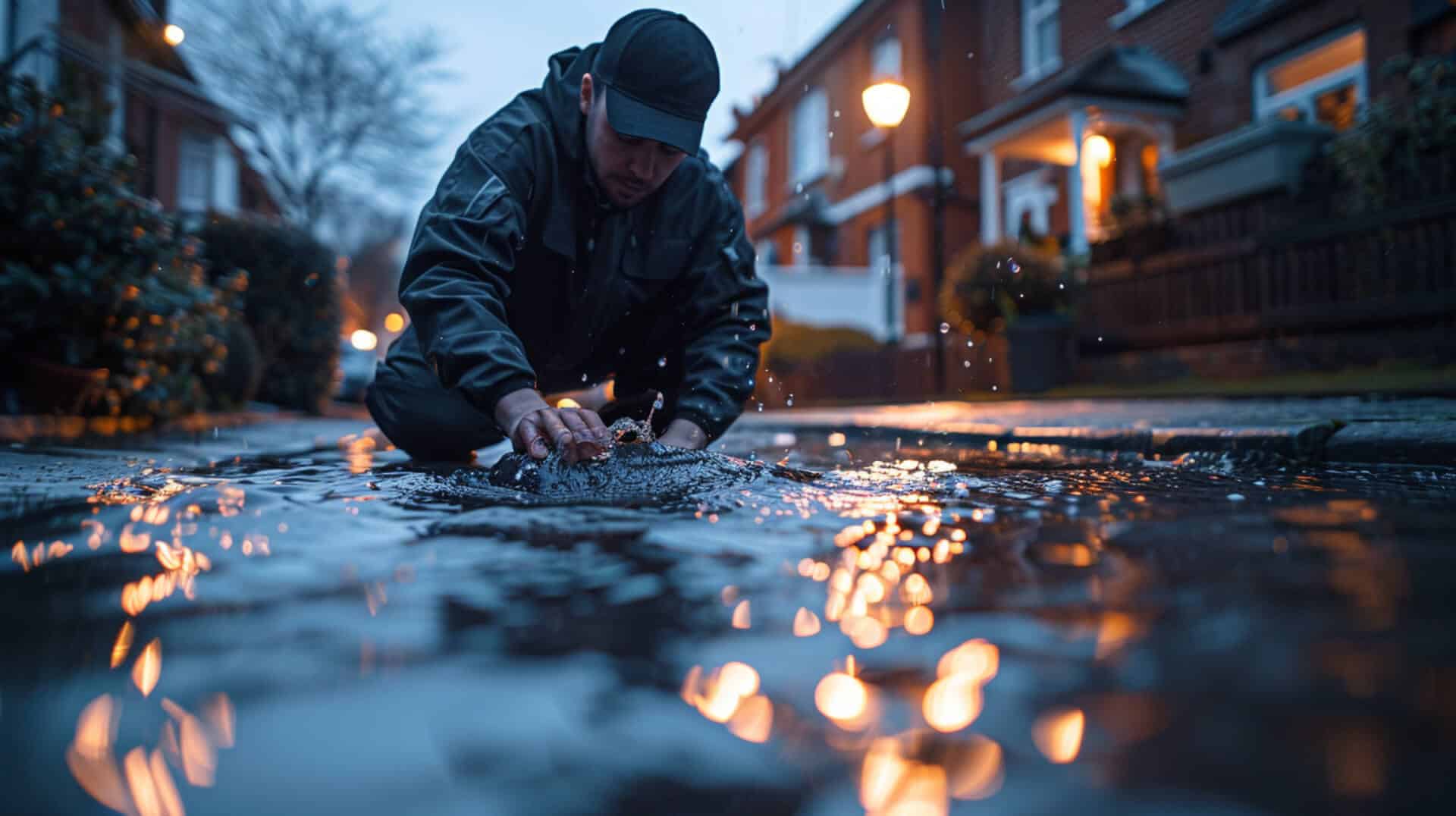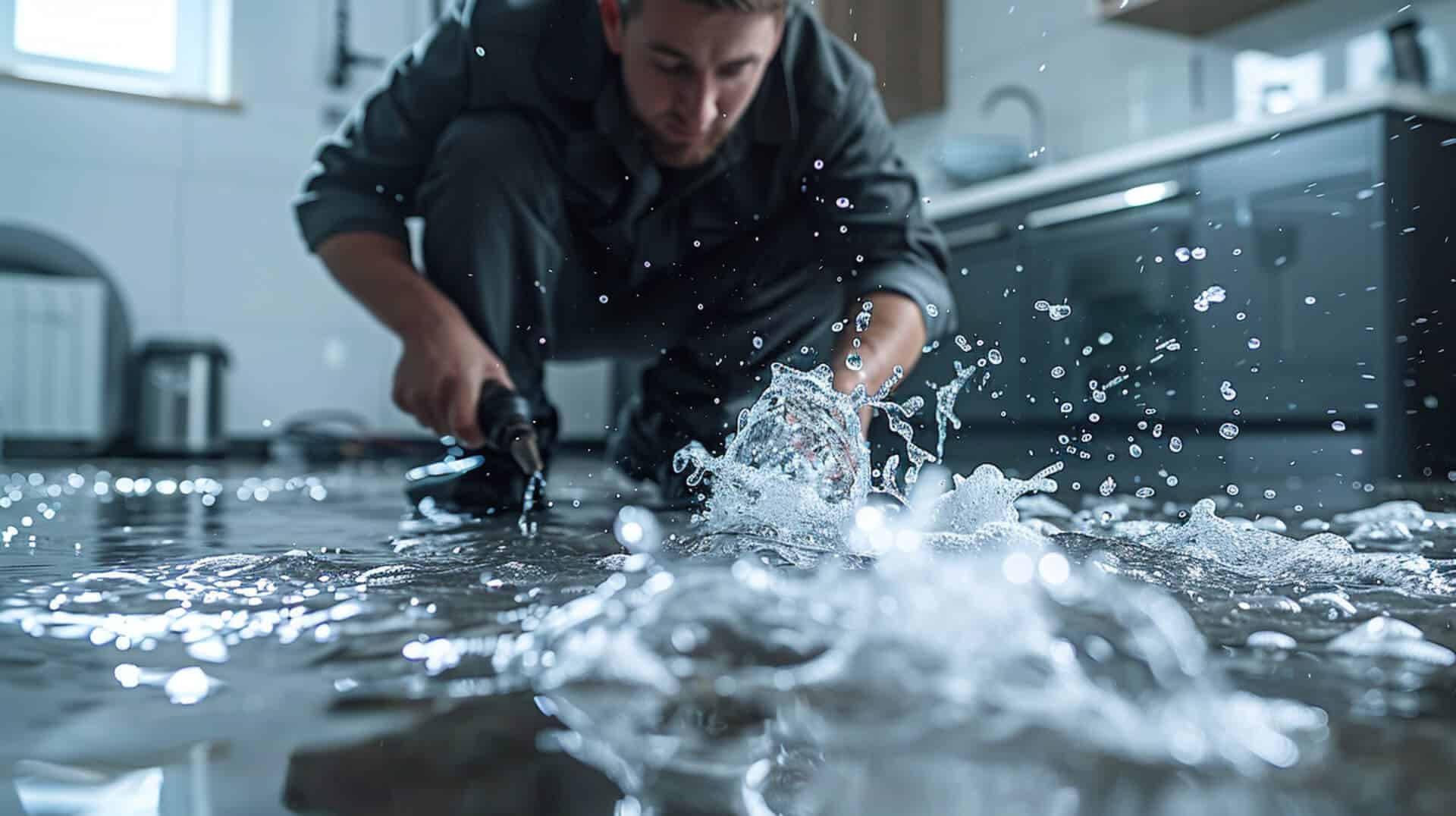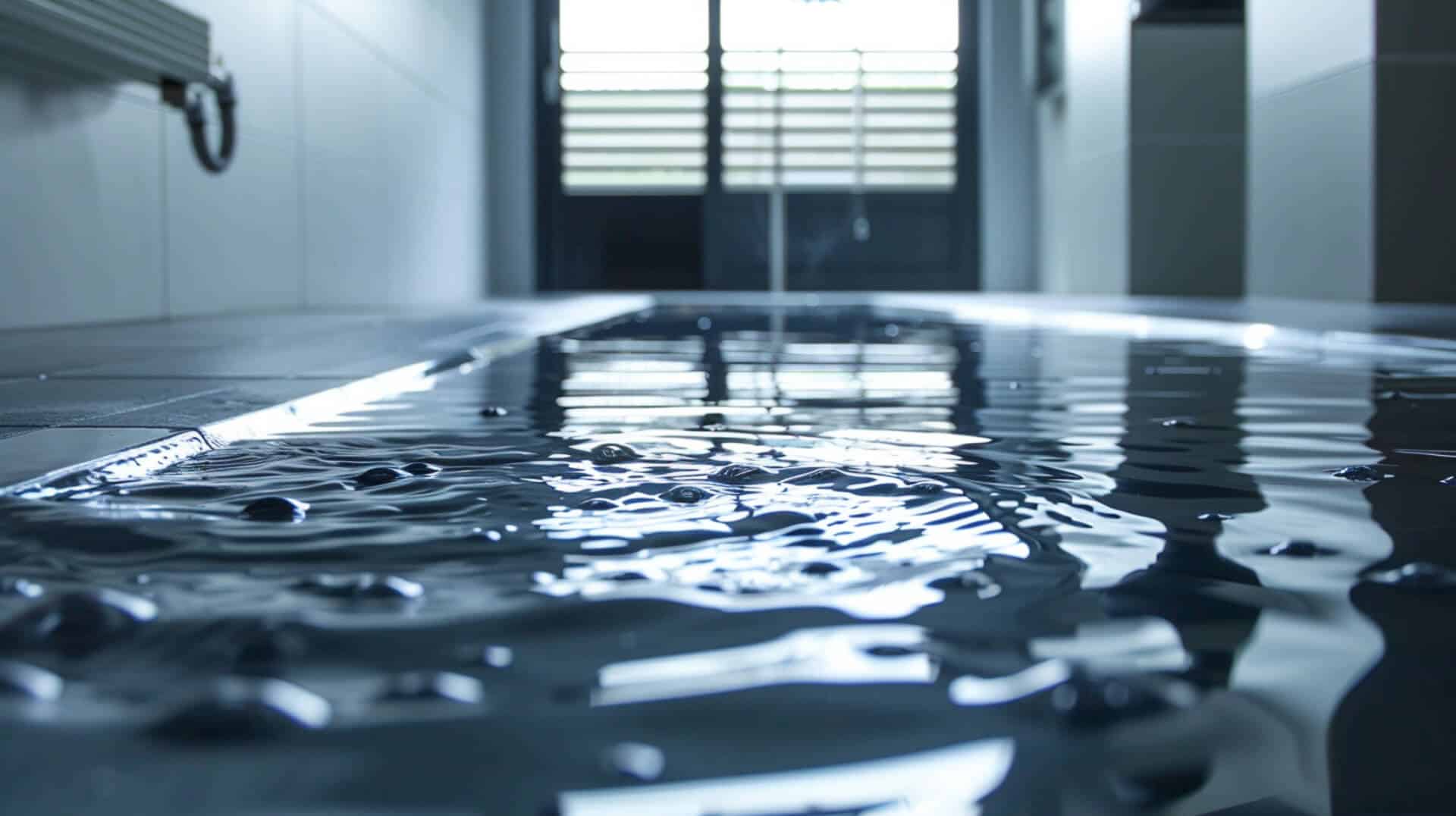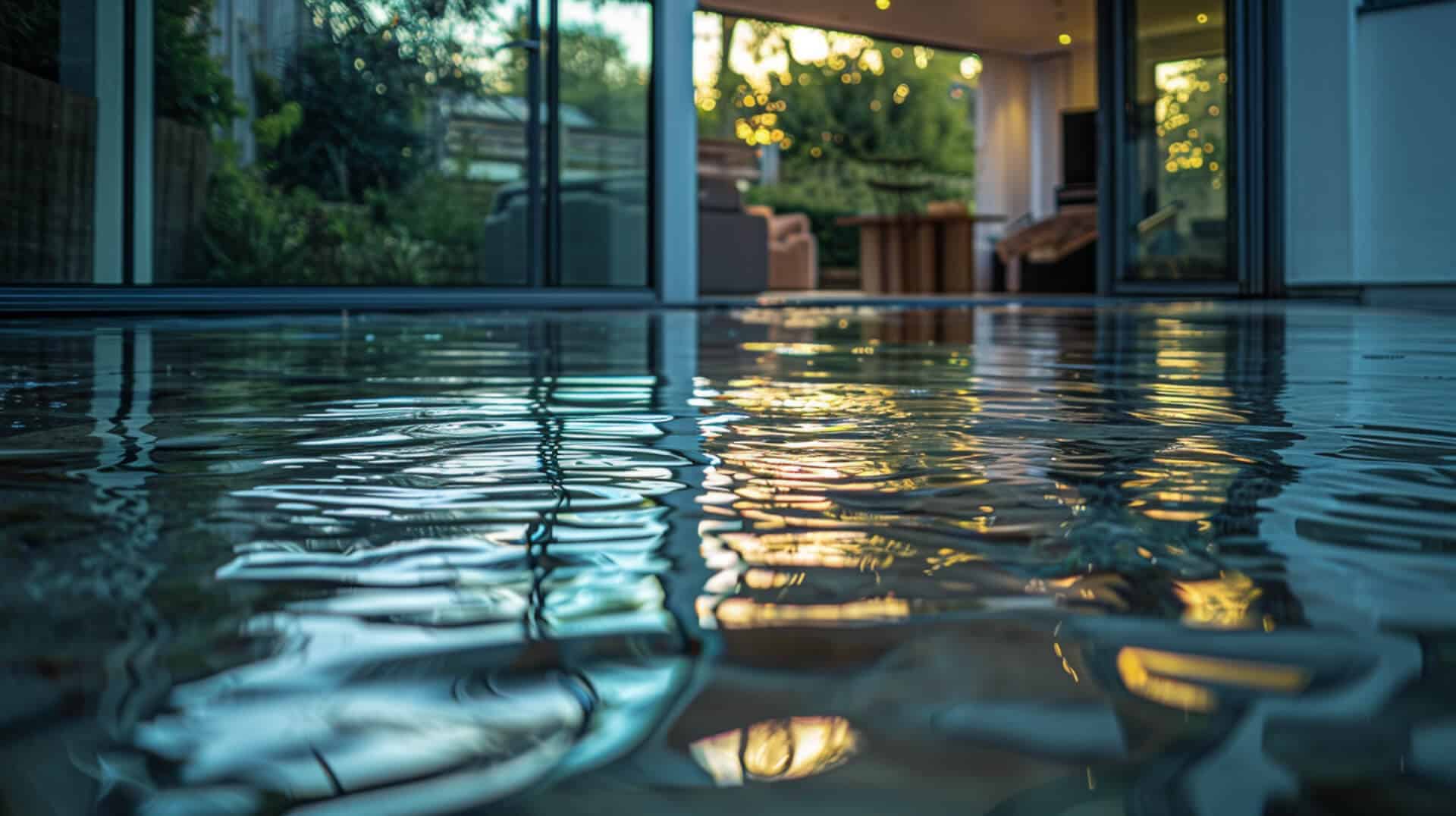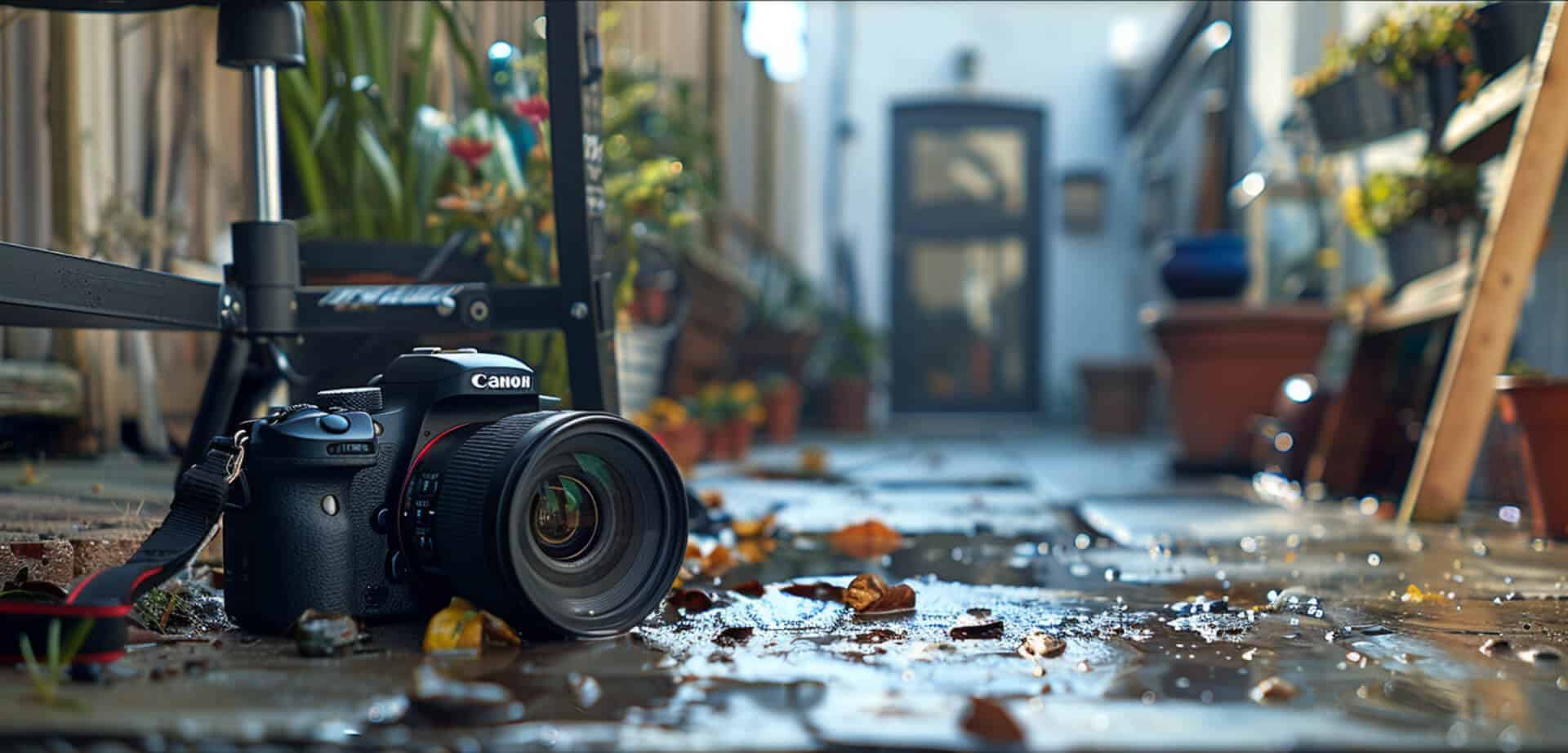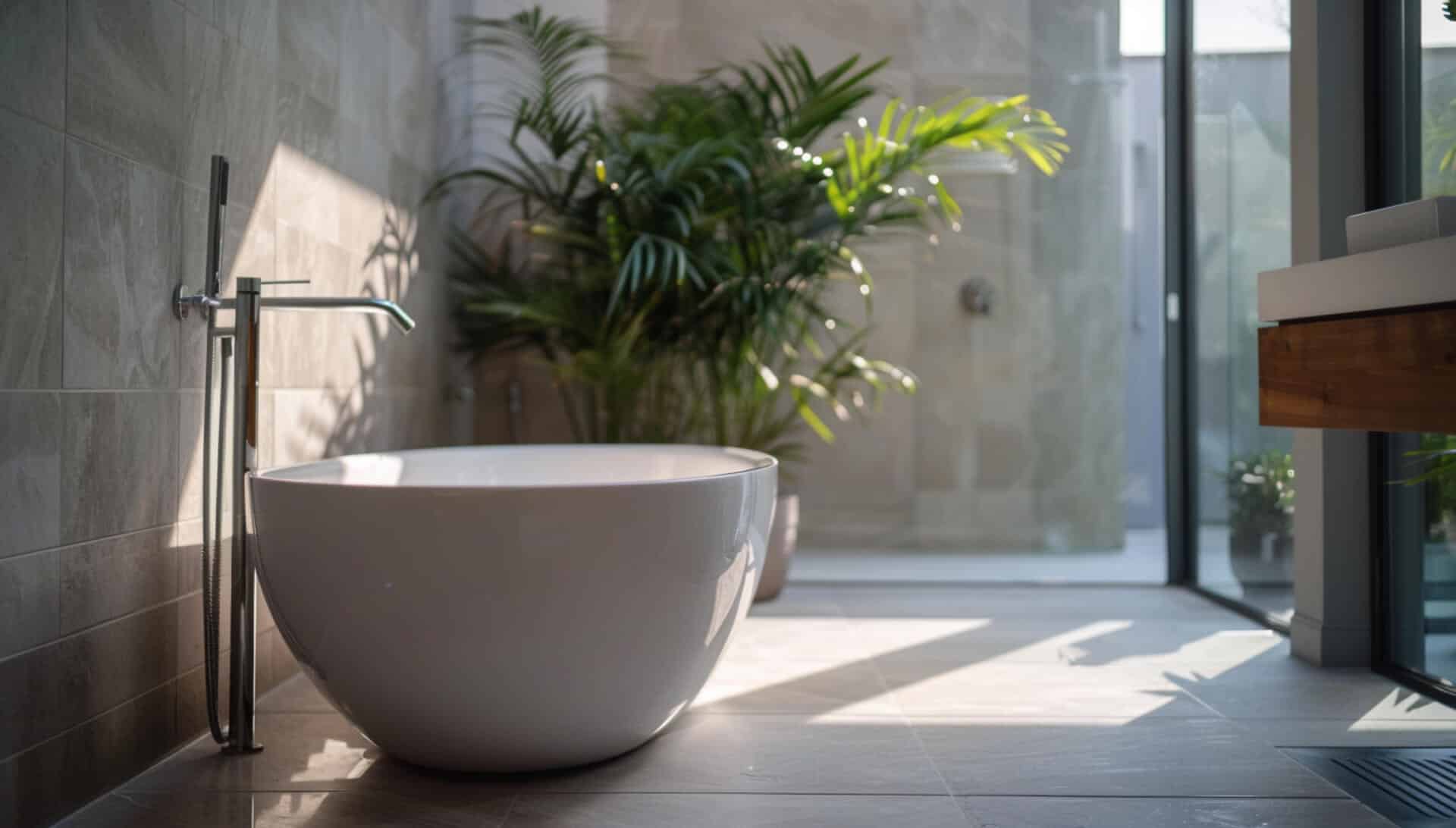 Why Is A Structural Drain Survey Important
Why Is A Structural Drain Survey Important
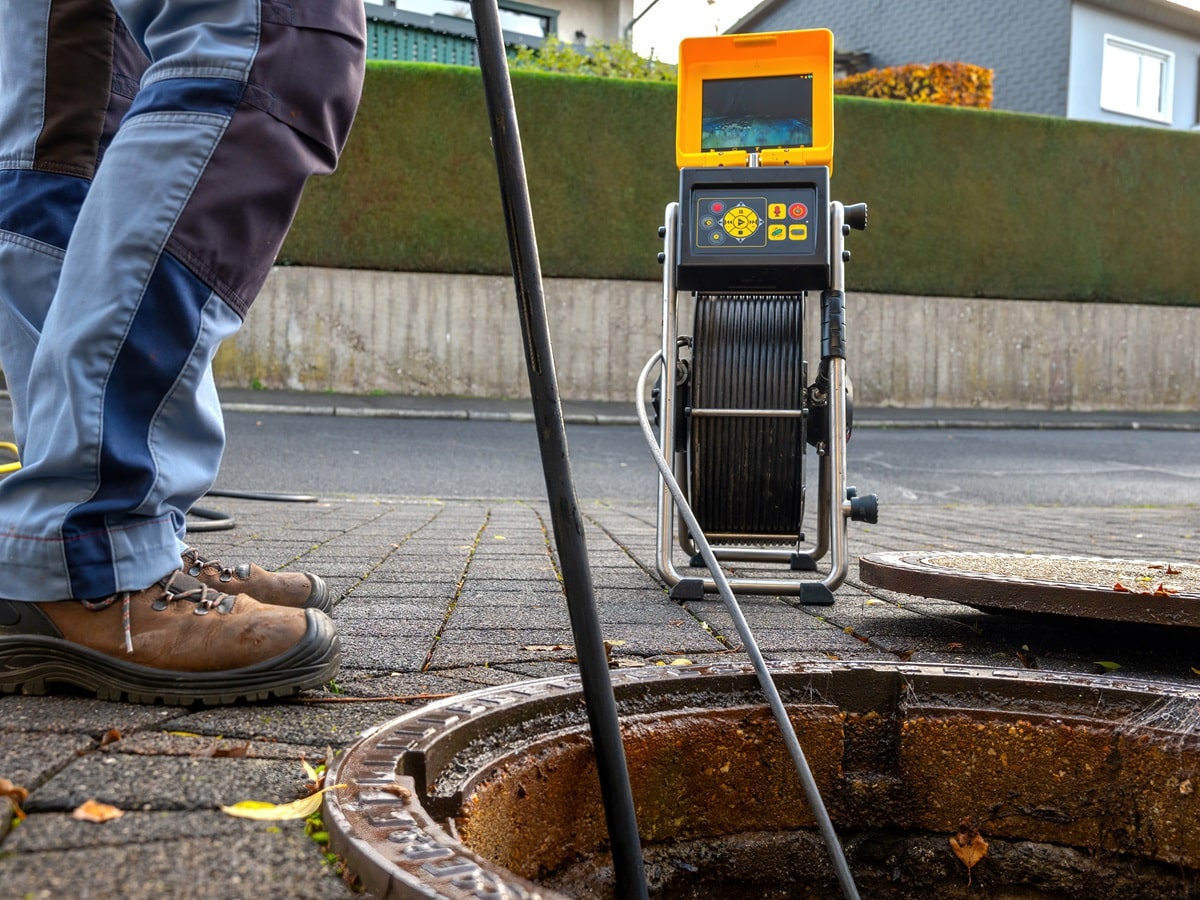
When you’re responsible for the integrity of a property, understanding the condition of its drainage system is paramount. A structural drain survey serves as a critical diagnostic tool, employing advanced technologies such as Closed-Circuit Television (CCTV) cameras to non-invasively examine the hidden complexities of underground drainage systems.
The Role of Technology in Drain Surveys
CCTV cameras are the cornerstone of modern drain surveys, providing real-time footage that allows for the immediate identification of issues within the drainage system. This technology enables a thorough inspection without the need for disruptive excavation work.
Why Drain Surveys are Essential
For property owners, business owners, and facility managers, structural drain surveys are indispensable. They offer a glimpse into the unseen, revealing potential or existing problems such as blockages, structural defects, and pipe damage. These surveys are not only crucial for the maintenance of property but also for planning renovations or extensions.
Non-Invasive Diagnostic Approach
The non-invasive nature of structural drain surveys means that your property remains undisturbed during the inspection. This approach minimises the disruption to daily operations, making it a preferred method for diagnosing drainage issues.
Manifest Benefits of Conducting Drain Surveys
Conducting these surveys can manifest benefits in various ways. They provide peace of mind by ensuring that the drainage system is in good condition, offer leverage in property negotiations, and help in complying with regulatory standards. Moreover, they are a cost-effective solution to prevent future expensive repairs due to undetected drainage problems.
The Role of CCTV in Drainage Diagnostics
Closed-circuit television (CCTV) technology has become an indispensable tool in structural drain surveys, offering a non-destructive means to evaluate the condition of underground drainage systems. By providing a direct visual assessment, CCTV enables the identification of issues that are otherwise inaccessible without excavation.
Advancements in CCTV Technology
CCTV technology has advanced to the point where it can reveal a range of hidden problems within drainage systems. High-resolution cameras can detect fine cracks, subtle pipe displacements, and even minor root intrusions that might escape other diagnostic methods. The precision of CCTV inspections allows for a detailed analysis of the drain’s interior, ensuring that no defect goes unnoticed.
Real-Time Footage for Immediate Analysis
The real-time footage obtained during a CCTV drain survey is critical for making informed decisions on the spot. This immediate visual feedback allows engineers to identify and diagnose issues quickly, facilitating prompt and accurate decision-making. The ability to observe live conditions within the pipes provides a clear understanding of the drainage system’s status, enabling targeted interventions.
CCTV as a Diagnostic Cornerstone
CCTV’s ability to provide a clear picture of the underground infrastructure without the need for disruptive digging makes it a cornerstone in modern drain diagnostics. Its use in structural drain surveys is essential for a comprehensive understanding of a property’s drainage system, ensuring that potential problems are identified and addressed before they escalate into more significant issues.
Identifying Common Drainage Issues Through Surveys
Structural drain surveys are pivotal in detecting a variety of issues that can compromise the integrity of drainage systems. These surveys are designed to identify blockages and structural defects that could lead to more severe problems if left unaddressed.
Types of Blockages and Structural Defects
The most common issues identified during these surveys include:
- Waste Buildup: Accumulation of debris and waste can cause significant blockages.
- Pipe Breakages: Cracks or fractures in the pipes that may lead to leaks or collapses.
- Displaced Pipework: Pipes that have shifted from their original position, potentially disrupting the flow.
Impact of Root Intrusions and Incorrect Connections
- Root Intrusions: Tree roots can invade pipes, causing blockages or damage.
- Incorrect Connections: Misaligned pipes can lead to inefficient drainage and backups.
The Crucial Role of Early Detection
Early detection through drain surveys is essential for maintaining system integrity. It allows for:
- Prompt Repairs: Addressing issues before they escalate.
- Cost Savings: Preventing more extensive, costly repairs in the future.
- System Longevity: Prolonging the life of the drainage infrastructure.
Informing Corrective Actions
Detected issues inform the necessary corrective actions, guiding professionals to:
- Tailor Repairs: Customise solutions based on specific findings.
- Prevent Recurrence: Implement measures to avoid future problems.
- Ensure Compliance: Align with regulatory standards for drainage systems.
Applications and Benefits of Conducting Drain Surveys
Structural drain surveys serve as a critical tool across various scenarios, from property transactions to routine maintenance checks. These surveys provide a comprehensive assessment of a drainage system’s condition, offering valuable insights that can influence decision-making and future planning.
Leverage in Property Transactions
When buying or selling property, a structural drain survey can be a negotiating asset. For buyers, it offers a clear picture of any potential issues that may require attention, which can be used to negotiate a lower purchase price. Sellers, on the other hand, can use a clean bill of drain health to justify their asking price.
Regulatory Compliance
Compliance with building regulations is a non-negotiable aspect of property ownership and management. Drain surveys can ensure that your drainage system adheres to the required standards, potentially fulfilling home insurance requirements and avoiding legal complications.
Contribution to Long-Term Savings
Investing in a structural drain survey can lead to significant long-term cost savings. By identifying and addressing issues early, you’re likely to avoid the higher costs associated with emergency repairs. Moreover, maintaining a well-functioning drainage system can enhance the overall value of your property, making it a wise investment for the future.
The Process and Methods of Structural Drain Surveys
A structural drain survey is a comprehensive evaluation of drainage systems, employing a blend of methodologies to ensure a thorough examination. The process typically involves several steps, each designed to provide insights into the condition of the drainage infrastructure.
Integration of CCTV Inspections with Pressure Testing
CCTV inspections are often complemented by water and air pressure tests to assess the functionality of pipes:
- Water Pressure Tests: These help in identifying leaks and weaknesses in the pipe walls.
- Air Pressure Tests: Useful for detecting even the smallest breaches in the drainage system.
Necessity of Combined Visual and Indoor/Outdoor Inspections
A holistic approach to drain surveys necessitates a combination of visual checks and indoor/outdoor inspections:
- Visual Inspections: Offer a preliminary assessment of the drain’s condition.
- Indoor/Outdoor Inspections: Ensure that all sections of the drainage system, including those that run inside and outside the property, are scrutinised.
Technological Advancements in Drain Survey Equipment
Recent advancements in survey equipment have significantly improved the accuracy of inspections:
- Enhanced CCTV Cameras: Provide high-resolution imagery for better defect detection.
- Drain Tracing Tools: Allow for precise location of drains and identification of their routes.
- Manhole Inspection Cameras: Facilitate detailed examination of manholes and connecting pipes.
By employing these methods, structural drain surveys can provide property owners with a detailed understanding of their drainage system’s condition, enabling informed maintenance and repair decisions.
Scheduling Structural Drain Surveys for Preventative Maintenance
Regular maintenance of drainage systems is essential for ensuring their longevity and functionality. Structural drain surveys play a crucial role in this preventative maintenance strategy.
Optimal Frequency of Drain Surveys
For optimal maintenance, it is recommended that structural drain surveys be conducted:
- Annually: As a general guideline, especially for properties with a history of drainage issues.
- Biennially: For newer or recently repaired systems that have shown no signs of problems.
Preventative Surveys for System Health
Preventative use of drain surveys is critical for several reasons:
- Early Detection: Identifying potential issues before they escalate can save significant repair costs.
- System Verification: Ensuring that the drainage system operates efficiently and within regulatory compliance.
Role of Gutter Maintenance
Gutter maintenance is an integral part of preventative care:
- Regular Cleaning: To prevent blockages that can lead to water damage.
- Inspection: Checking for signs of wear and tear that could compromise the drainage system.
Predictive Power of Regular Inspections
Regular inspections can help predict future problems by:
- Monitoring Changes: Noting any changes in the system’s performance over time.
- Preventative Measures: Implementing measures to address minor issues before they become major.
By adhering to a schedule of regular drain surveys and maintenance checks, you can ensure the health and efficiency of your property’s drainage system, ultimately safeguarding against unexpected failures and costly repairs.
Selecting Professional Services for Drain Surveys
When you’re considering a structural drain survey, selecting the right professional service is crucial. The expertise and qualifications of the service provider will directly impact the quality and reliability of the survey results.
Qualifications and Experience
Look for service providers with:
- Certifications: Ensure they have the necessary industry certifications.
- Experience: Providers should have a proven track record with structural drain surveys.
Emergency Support and Detailed Reporting
A reputable service should offer:
- Emergency Support: Availability to address urgent issues that may arise during the survey.
- Detailed Reporting: Comprehensive reports that clearly outline any issues and recommended actions.
Trust and Accreditation
Trust in a service provider is bolstered by:
- Professional Bodies: Membership in recognised industry bodies like Trust a Trader.
- Accreditations: Look for providers that have been accredited by relevant authorities.
Analysis and Recommendations
A thorough service provider will deliver:
- Clear Analysis: An understandable breakdown of the survey findings.
- Actionable Recommendations: Practical advice on how to address any identified issues.
By ensuring these criteria are met, you can trust that the structural drain survey will be conducted with the highest level of professionalism and attention to detail, providing you with accurate information to make informed decisions about your property’s drainage system.
Environmental Considerations in Drainage Management
Structural drain surveys are not only essential for maintaining property integrity but also play a significant role in environmental protection. By identifying and addressing drainage issues, these surveys contribute to the prevention of soil contamination and water pollution.
Preventing Soil Contamination
Soil contamination can occur when leaking drains allow harmful substances to seep into the ground. Structural drain surveys help to:
- Detect Leaks: Early identification of leaks prevents contaminants from reaching the soil.
- Assess Pipe Conditions: Evaluating the condition of pipes ensures they are not at risk of causing contamination.
Mitigating Water Pollution Risks
Drainage system failures can lead to water pollution, which poses risks to local ecosystems and public health. Drain surveys are crucial for:
- Identifying Potential Pollutants: Surveys can detect the presence of substances that could pollute water bodies.
- Recommending Corrective Measures: Professional analysis of survey data leads to recommendations that prevent pollutants from entering waterways.
Proactive Drainage Maintenance
Proactive maintenance, supported by regular drain surveys, offers environmental benefits by:
- Maintaining System Integrity: Ensuring that the drainage system functions correctly reduces the risk of environmental hazards.
- Facilitating Timely Repairs: Prompt repairs prevent the escalation of issues that could harm the environment.
Property Owner’s Role in Environmental Stewardship
As a property owner, your commitment to diligent drain management aids in environmental protection by:
- Scheduling Regular Surveys: This practice helps to keep drainage systems in optimal condition, safeguarding against environmental damage.
- Implementing Survey Recommendations: Acting on professional advice ensures that your property’s drainage system does not adversely affect the environment.
Recognising the Signs of Drainage Issues
Awareness of early warning signs is crucial in identifying potential drainage problems before they escalate into more significant and costly issues. Property owners, business owners, and facility managers should be vigilant in monitoring these indicators.
Indicators of Drainage Problems
Several signs may point to underlying drainage issues:
- Slow Drainage: Water taking longer than usual to drain is often the first sign of a blockage.
- Unpleasant Odours: Persistent bad smells can indicate trapped waste or sewer gas escaping from the drainage system.
- Gurgling Noises: Sounds emanating from the pipes can be a sign of trapped air due to clogs or venting issues.
Importance of Prompt Action
Acting quickly upon noticing these signs is essential:
- Preventing Damage: Early intervention can prevent water damage to the property’s structure and interiors.
- Cost Savings: Addressing issues promptly can save on extensive future repair costs.
Long-Term Benefits of Early Detection
By recognising and responding to these early signs, property stakeholders can:
- Maintain System Health: Ensure the drainage system remains clean and functional.
- Avoid Disruptions: Prevent the inconvenience of major repairs or system overhauls.
Vigilance in detecting these signs and seeking professional assessment can lead to timely maintenance, ultimately preserving the integrity and functionality of the drainage system.
Assessing the Financial Benefits of Structural Drain Surveys
When considering the cost of a structural drain survey, it’s important to weigh it against the potential expenses of unaddressed repairs. A drain survey can seem like an additional upfront cost, but it is a prudent investment that can lead to significant savings.
Factors Influencing Drain Survey Costs
The cost of conducting a drain survey can vary based on several factors:
- Property Size: Larger properties may have more extensive drainage systems, increasing the survey’s scope.
- Complexity of the Drainage System: Complex systems with multiple connections require more time to assess.
- Accessibility: Easy access to the drainage system can reduce the time and labour involved, impacting the cost.
Prudence in Property Investment
Investing in a drain survey is considered wise for several reasons:
- Risk Mitigation: Identifying issues early can prevent costly repairs or replacements.
- Informed Decisions: Survey findings can influence property investment decisions, ensuring you’re aware of any additional costs that may arise.
Impact on Insurance and Compliance Costs
The findings from a drain survey can also affect insurance premiums and compliance with regulatory standards:
- Insurance Requirements: Some insurers may offer better terms if regular maintenance, including drain surveys, is demonstrated.
- Regulatory Compliance: Ensuring your drainage system meets building regulations can avoid fines and mandatory upgrades.
By understanding these financial implications, property owners can make informed decisions about the maintenance and management of their drainage systems.
DIY Versus Professional Drain Surveys: A Comparative Analysis
When it comes to assessing the condition of drainage systems, property owners may consider whether to undertake the task themselves or engage professional services. Understanding the differences between DIY and professional drain surveys is crucial for making an informed decision.
Limitations of DIY Drain Surveys
DIY drain surveys come with several limitations:
- Lack of Specialised Equipment: Homeowners typically do not have access to the advanced CCTV systems used by professionals.
- Insufficient Expertise: Properly interpreting the findings of a drain survey requires specific knowledge and experience.
- Risk of Oversight: Without the trained eye of a professional, some issues may go undetected.
Advantages of Professional Expertise
Professional drain surveys offer distinct advantages:
- Accurate Diagnostics: Experts use high-grade equipment and their knowledge to provide precise assessments.
- Comprehensive Analysis: Professionals can evaluate the entire system, ensuring no part is overlooked.
- Quality of Reporting: Detailed reports from professional surveys provide actionable insights and recommendations.
Importance of Accuracy in Drain Surveys
Accuracy in identifying and addressing drainage issues is paramount because:
- Prevents Further Damage: Accurate diagnostics lead to correct repairs, preventing additional problems.
- Ensures System Longevity: Properly addressing issues contributes to the overall health and longevity of the drainage system.
By choosing professional drain surveys, property owners can ensure a thorough and accurate assessment, leading to the proper maintenance and management of their drainage systems.
The Integral Role of Structural Drain Surveys in Property Management
Structural drain surveys are a critical component in the management and maintenance of properties. They provide a non-invasive method to assess the health of drainage systems, ensuring that property, business owners, and facility managers can maintain their infrastructure effectively and efficiently.
Alignment with Proactive Maintenance
These surveys are a key practice in proactive maintenance, allowing for:
- Early Detection: Identifying potential issues before they become costly repairs.
- Maintenance Planning: Assisting in the scheduling of regular maintenance to prevent system failures.
Contribution to Environmental Stewardship
Structural drain surveys contribute to environmental stewardship by:
- Preventing Contamination: Detecting leaks and breaks that could lead to soil and water pollution.
- Promoting Sustainability: Encouraging the maintenance of systems in a way that supports long-term environmental health.
Long-Term Benefits for Property Integrity
The long-term benefits of regular drain surveys include:
- Preserving Property Value: Maintaining a functional drainage system is crucial for preserving the value of the property.
- Avoiding Structural Damage: Preventing issues like subsidence and water damage that can compromise the integrity of buildings.
Empowering Decision-Making and Planning
Insights from drain surveys empower property stakeholders by:
- Informing Investments: Providing data to make informed decisions about property investments and improvements.
- Facilitating Strategic Planning: Enabling long-term planning for infrastructure maintenance and upgrades.
